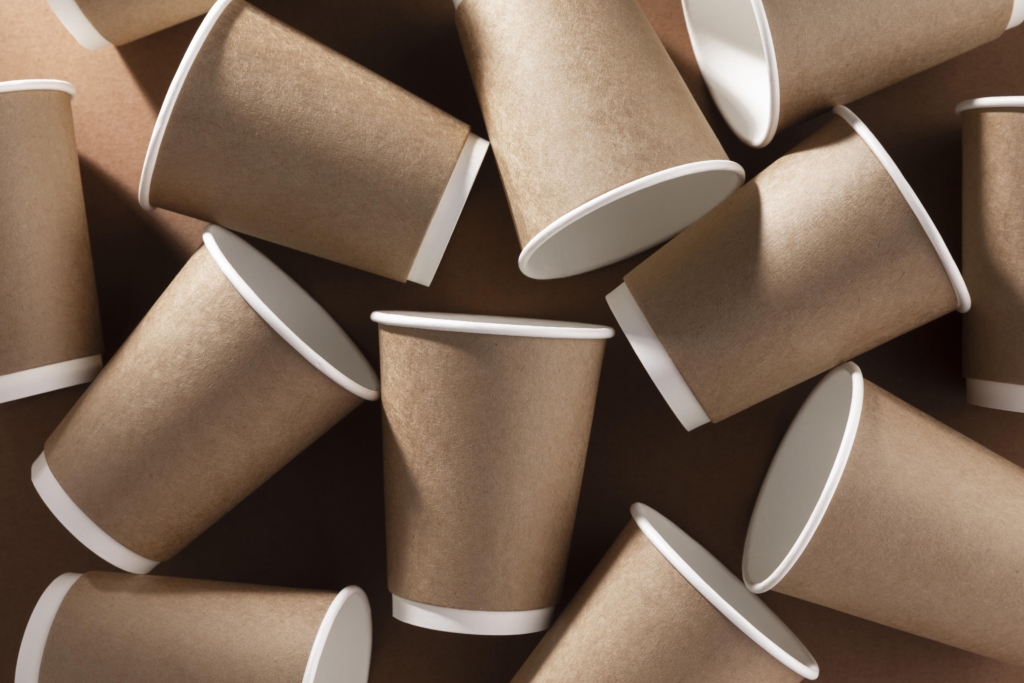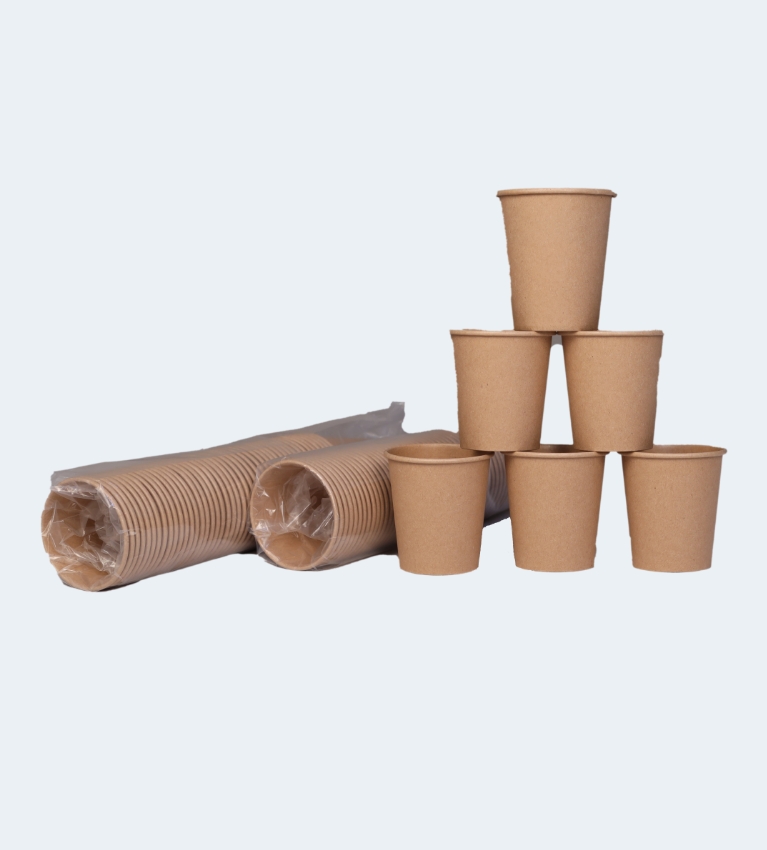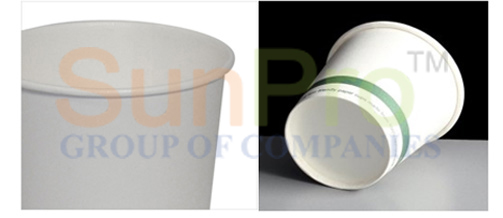How Does Cupstock Impact the Environment?
Understanding Cupstock Environmental Impact
[Keyword Cluster]= Cupstock environmental impact, cupstock ecological footprint, sustainable cupstock options
Cupstock material plays a significant role in the packaging and disposable product industry. It is commonly used in the production of cups and other food and beverage containers. However, the environmental impact of cupstock material cannot be ignored. In this section, we will explore the various aspects of cupstock environmental impact and discuss possible solutions for a more sustainable future.
What is cupstock material and its significance in packaging and disposable products?
Cupstock material refers to the paperboard used to create cups and other similar products. It is typically coated with a layer of plastic, such as polyethylene, to provide resistance to liquids and prevent leakage. Cupstock material is widely used in the packaging industry due to its versatility, durability, and cost-effectiveness. It is commonly found in hot and cold beverage cups, food containers, and other disposable products.
The significance of cupstock material lies in its convenience and affordability. Disposable cups made from cupstock material are widely used in the food and beverage industry, allowing consumers to enjoy their favorite beverages on the go. The lightweight nature of cupstock material makes it easy to transport, reducing the overall carbon footprint associated with packaging and distribution.
How does cupstock production contribute to environmental issues such as pollution and deforestation?
While cupstock material offers convenience, its production process and disposal pose significant challenges to the environment. The primary environmental issues associated with cupstock production include pollution and deforestation.
- Pollution: The plastic coating on cupstock material presents challenges in terms of recyclability. Paper cups lined with polyethylene cannot be recycled as is, leading to most of them ending up in landfills. Due to the complexity of separating the plastic lining from the paper, recycling efforts are often inefficient. As a result, a large number of paper cups are routed to landfills or incinerators, contributing to pollution and greenhouse gas emissions.
- Deforestation: The production of cupstock material requires a significant amount of raw materials, mainly wood pulp sourced from forests. This leads to deforestation, resulting in the loss of biodiversity and natural habitats for numerous species. Over 20 million trees are cut down each year for paper cup production alone, further exacerbating the environmental impact of cupstock material.
What are the specific challenges related to recycling cupstock material compared to other packaging materials?
Recycling cupstock material presents unique challenges compared to other packaging materials. The primary challenge lies in the plastic lining that coats the paperboard. Paper cups lined with polyethylene cannot be recycled in regular paper recycling streams, as the plastic and paper need to be separated for optimal recycling.
The separation process requires specialized equipment and facilities, making it more complex and costly. As a result, many recycling facilities do not have the necessary infrastructure or capacity to effectively recycle cupstock material. This leads to a lower recycling rate and an increased reliance on landfills and incineration for disposal.
Are there any regulations or industry initiatives focused on reducing the environmental impact of cupstock material?
In recent years, there has been a growing awareness of the environmental impact of cupstock material in the packaging industry. As a result, several regulations and industry initiatives have been introduced to address these concerns and reduce the environmental impact.
Some notable regulations and initiatives include:
- Disposable cup bans: Many cities and regions have implemented or are considering implementing bans on disposable cups, especially those made from non-recyclable or hard-to-recycle materials. These bans aim to encourage the use of more sustainable alternatives, such as reusable cups, and reduce the overall consumption of disposable cups.
- Packaging regulations: Governments and regulatory bodies are implementing stricter packaging regulations that aim to reduce the use of non-recyclable materials and promote the use of sustainable packaging options. These regulations often include guidelines and requirements for packaging materials, recycling capabilities, and product labeling.
- Industry initiatives: Various coffee shop chains and food and beverage companies have launched their own initiatives to reduce the environmental impact of cupstock material. For example, Dunkin’ Donuts has committed to eliminating polystyrene cups by 2020, while Starbucks plans to double the recycled content in its cups by 2023. These initiatives aim to increase the sustainability of cupstock material and promote recycling and waste reduction.
In conclusion, cupstock material has a significant impact on the environment due to its production, disposal, and recycling challenges. The plastic lining on paper cups and the high demand for raw materials contribute to pollution, deforestation, and greenhouse gas emissions. However, regulations, industry initiatives, and consumer awareness are driving efforts to reduce the environmental impact of cupstock material. By promoting reusable alternatives, improving recycling processes, and implementing sustainable practices, we can work towards a more environmentally-friendly future in the packaging and disposable product industry.
Comparing Cupstock with Other Materials
Environmental Impact of Cupstock vs Other Materials
When evaluating the environmental impact of different materials, it is crucial to consider various factors such as production, transportation, energy usage, greenhouse gas emissions, and end-of-life disposal. Here, we compare cupstock with other commonly used materials:
- Plastic: Plastic is notorious for its harmful environmental impact. It is derived from fossil fuels, requires significant energy for production, and contributes to greenhouse gas emissions. Plastic cups, particularly those made from expanded polystyrene foam, are challenging to recycle and can take hundreds of years to decompose. Moreover, plastic cups pose risks to ecosystems and wildlife due to fragmentation into microplastics.
- Glass: Glass cups have minimal environmental impact since they can be reused multiple times and are recyclable. The production of glass cups requires significant energy, but their long lifespan offsets this impact. Glass cups can be recycled indefinitely without any degradation in quality, making them a sustainable alternative to cupstock.
- Metal: Metal cups, such as stainless steel or aluminum, also offer a low environmental footprint. Metal production requires substantial energy and resources, but metal cups can be reused numerous times, reducing the overall impact. It is worth noting that metal cups need to be reused a certain number of times per year to offset their higher production impact compared to disposable options.
Challenges in Recycling Cupstock Material
One of the primary challenges in recycling cupstock material is its composition. Paper cups are commonly lined with a thin layer of polyethylene to make them waterproof. This plastic lining prevents the cups from being recycled as regular paper. As a result, most paper cups end up in landfills or incinerators, contributing to waste and greenhouse gas emissions.
The recycling process for cupstock material is complex and requires specialized facilities. Separating the plastic lining from paper is technically challenging and resource-intensive. Therefore, the vast majority of paper cups are not recycled, exacerbating the environmental impact.
Viable Alternatives to Cupstock
To reduce the environmental harm caused by packaging and disposable products, several viable alternatives to cupstock material have emerged. These alternatives emphasize sustainability and recyclability. Here are a few examples:
- Reusable Cups: Encouraging the use of reusable cups is an effective way to minimize environmental impact. Reusable cups, like the HuskeeCup made from waste husk, offer a sustainable alternative to single-use cups. Companies like Huskee promote reuse and recycling programs, such as HuskeeLoop and HuskeeSwap, to create a circular economy for coffee cups.
- Compostable Cups: Compostable cups are another alternative to cupstock material. These cups are made from plant-based materials like cornstarch and break down into organic matter when disposed of in a composting facility. However, it is essential to ensure that these cups are properly composted to avoid contamination of recycling streams.
- Innovation in Packaging: Various innovative materials are being explored to replace cupstock. For instance, researchers are developing bio-based materials derived from agricultural waste, such as wheat straw or bamboo, that can serve as a sustainable alternative to traditional cupstock. These materials are renewable, compostable, and have a lower environmental impact.
Summary
When comparing cupstock with other materials, it becomes evident that cupstock has a significant environmental impact. Plastic cups, glass cups, and metal cups offer more sustainable alternatives, with glass and metal cups having the lowest environmental footprint. Challenges in recycling cupstock material, particularly the plastic lining used in paper cups, contribute to the low recycling rates of cupstock. However, viable alternatives such as reusable cups and compostable cups are emerging as potential solutions. Innovations in packaging materials also provide opportunities to reduce the environmental harm caused by cupstock. By adopting these alternatives and supporting sustainable practices, we can make significant strides in mitigating the environmental impact of packaging and disposable products.
Promoting Eco-Friendly Practices with Cupstock
When it comes to promoting sustainability and reducing the environmental impact of cupstock material, there are several eco-friendly initiatives and efforts that have been implemented. These initiatives aim to address the challenges associated with cupstock production, use, and disposal. Additionally, consumers and businesses can play a significant role in promoting sustainability by adopting certain practices. Let’s explore some of these initiatives and practices in more detail:
Eco-Friendly Initiatives for Cupstock
- Designing sustainable cupstock: Manufacturers are focusing on designing cupstock material that is more environmentally friendly. This includes developing cups made from renewable resources such as bamboo or other plant-based materials. These alternative materials have a lower ecological footprint compared to traditional cupstock materials.
- Recycling programs: Several companies have started implementing cup recycling programs in an effort to reduce waste. These programs involve setting up designated collection points or partnering with recycling facilities to ensure that used cups are properly recycled. For example, some coffee shop chains provide separate recycling bins for cups, which are then sent to specialized facilities.
- Biodegradable cup options: Another initiative is the development of biodegradable cup options. These cups are made from materials that can break down naturally over time, minimizing their impact on the environment. Biodegradable cupstock materials can degrade without harming ecosystems or contributing to pollution.
- Reusable cup campaigns: Many organizations and coffee shops are encouraging customers to bring their own reusable cups by offering discounts or incentives. This initiative aims to reduce the overall consumption of single-use cups and promote the use of sustainable alternatives. With the growing popularity of reusable cups, brands like Huskee have introduced programs like HuskeeLoop and HuskeeSwap, which promote reuse and recycling of coffee cups.
Consumer and Business Role in Sustainability
- Consumer education and awareness: Consumers can actively contribute to sustainability efforts by being aware of the environmental impact of cupstock material and making informed choices. This includes choosing reusable cups over single-use cups whenever possible, recycling cups properly, and supporting brands that prioritize sustainability.
- Using alternative cup options: Consumers can opt for alternatives to cupstock material such as reusable cups made of glass, metal, or ceramic. These materials can be used multiple times and have a lower impact on the environment compared to disposable cupstock. By choosing reusable options, consumers can significantly reduce waste and landfill pollution.
- Supporting sustainable brands and initiatives: As consumers, we have the power to support brands that prioritize sustainability and environmental responsibility. By choosing to support companies that use eco-friendly cupstock materials and have recycling programs in place, consumers can contribute to the shift towards sustainable practices.
- Businesses adopting sustainable practices: Businesses can play a crucial role in promoting sustainability by adopting eco-friendly practices themselves. This includes offering incentives for customers who bring their own reusable cups, implementing recycling programs within their establishments, and exploring alternative cup options that have a lower environmental impact.
Potential Policies and Regulations
- Implementation of single-use plastic bans: Governments and regulatory bodies can introduce policies that restrict or ban the use of single-use plastic cups. By doing so, the demand for cupstock material could decrease, encouraging the adoption of more sustainable alternatives.
- Improving recycling infrastructure: Governments can invest in better recycling infrastructure and facilities that are capable of handling and processing cupstock material more effectively. This would address the challenges associated with recycling cupstock and increase the chances of cups being properly recycled.
- Extended producer responsibility: By implementing extended producer responsibility policies, governments can hold cup manufacturers accountable for the environmental impact of their products. This includes ensuring that manufacturers take responsibility for the proper disposal or recycling of their cups and promoting the use of sustainable cupstock materials.
In conclusion, promoting eco-friendly practices with cupstock material requires a collective effort from both consumers and businesses. Through initiatives such as designing sustainable cupstock, implementing recycling programs, and encouraging the use of reusable cups, we can minimize the environmental impact of cupstock material. Additionally, policies and regulations that focus on reducing single-use cup consumption and improving recycling infrastructure can further contribute to a more sustainable future. Together, we can make a significant difference in preserving our environment.
Tables
Table 1: Comparison of Cupstock Environmental Impact with Other Materials
| Material | Production Impact | Disposal Impact | Recyclability |
|---|---|---|---|
| Cupstock | High | High | Low |
| Plastic | Medium | High | Low |
| Glass | Medium | Low | High |
| Metal | High | Low | High |
Table 2: Eco-Friendly Initiatives for Cupstock
| Initiative | Description |
|---|---|
| Designing sustainable cupstock | Manufacturers focusing on developing cupstock material made from renewable resources |
| Recycling programs | Implementation of cup recycling programs to ensure proper disposal and recycling of used cups |
| Biodegradable cup options | Development of cups made from materials that can break down naturally over time |
| Reusable cup campaigns | Encouraging the use of reusable cups and providing incentives for customers to bring their own cups |
FAQs about Understanding Cupstock Environmental Impact
What is cupstock material and its significance in packaging and disposable products?
A: Cupstock material refers to the paperboard used for cups and similar products, coated with plastic for liquid resistance, playing a crucial role in the packaging industry due to its convenience and affordability in creating cups and food containers.
How does cupstock production contribute to environmental issues such as pollution and deforestation?
A: The plastic lining on cupstock material hinders recyclability, leading to paper cups mostly ending up in landfills, and the production process relies heavily on raw wood pulp, contributing to pollution, deforestation, loss of biodiversity, and habitat degradation.
What are the specific challenges related to recycling cupstock material compared to other packaging materials?
A: Recycling cupstock material is challenging due to the plastic lining, requiring specialized facilities for separating the plastic from paper, resulting in low recycling rates and a high reliance on landfills and incineration for disposal.
Are there any regulations or industry initiatives focused on reducing the environmental impact of cupstock material?
A: Various regulations and initiatives, such as disposable cup bans, packaging regulations, and industry initiatives by coffee chains, aim to address the environmental impact of cupstock material, encourage sustainable practices, and promote the use of recyclable and eco-friendly alternatives.
In conclusion, cupstock’s environmental impact poses challenges, from production to recycling. Compared to alternatives, cupstock’s sustainability falls short. Eco-friendly practices and regulations can mitigate cupstock’s harm, promoting a greener future.




